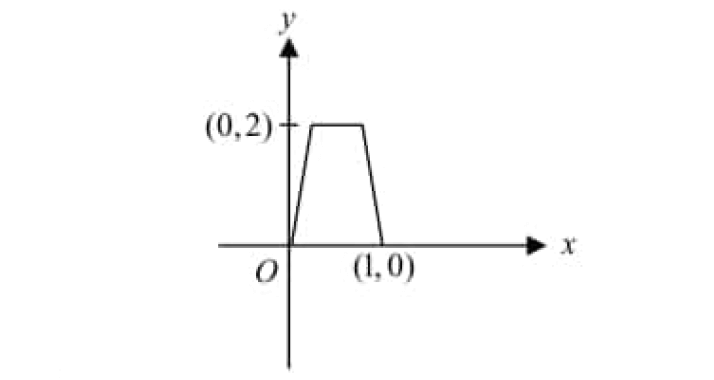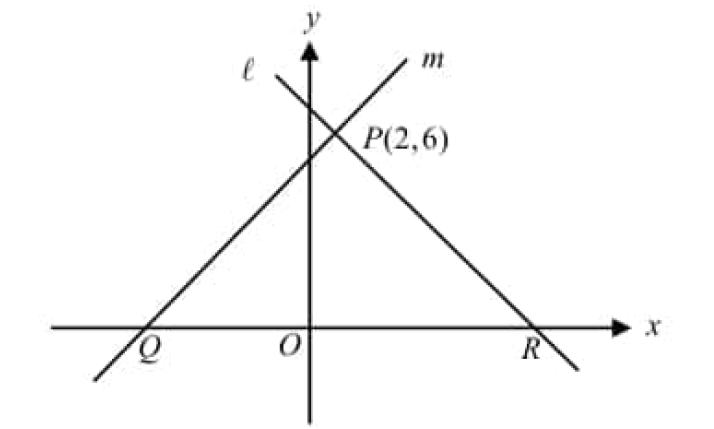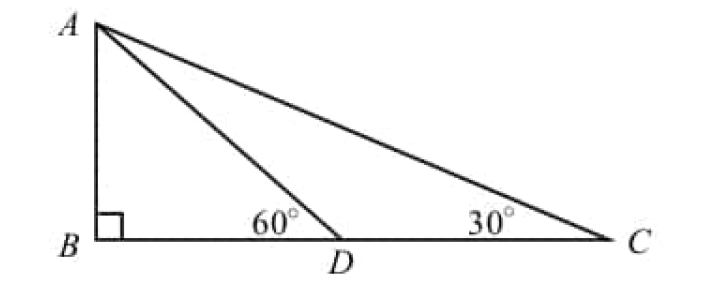ALGEBRA WORD PROBLEMS WORKSHEET WITH ANSWERS
Problem 1 :
When 23 is decreased from 5 times a number. the result is 57. Find the number.
Problem 2 :
If four times of Liam's age 9 years ago be subtracted from thrice of his age 4 years hence, the result would be equal to his present age. Find the present age of Liam.
Problem 3 :
The denominator of a fraction is 1 less than twice the numerartor. If 1 be added to both numerator and denominator, the fraction becomes ⅗. Find the fraction.
Problem 4 :
Sum of the digits in a two digit number is 11. Switching the digits results a number which is less than the original number by 45. Find the number.
Problem 5 :
The demand equation for a certain item is 'd = 15(p - 10)', where d is demand in lbs and p is price in dollars. The supply equation giving the supply s in lbs. for a price p in dollars per lb. is 's = 20(17 - p)'. What is the equilibrium price?
Problem 6 :
If one third of a number exceeds its fifth part by 8, find the number.
Problem 7 :
The perimeter of a rectangle is 28 cm. If the width is two-fifth of the length, find the area of the rectangle.
Problem 8 :
In triangle ABC, the average of m∠A and m∠B is 75°. Find m∠C = 75°.
Problem 9 :
In a fraction, sum of the numerator and denominator is 6. If the numerator is increased by 2 and the denominator by 1, the fraction becomes 1/2. Find the fraction.
Problem 10 :
For a concert, it was charged $12 for an adult and $7 for a kid. ids. If a total of 600 tickets were sold for a total of $5950, find the number of adults tickets and kids tickets were sold.
Problem 11 :
In a three digit number, the middle digit is zero and sum of the other two digits is 15. The number formed by switching the digits at hundreds place and tens place is less than the original number by 99. Find the number.
Problem 12 :
A pencil manufaturing company produces 84 pencils at a cost $247 and 128 pencils at a cost of $324. If the cost function be linear, find the equation of the cost function and then use it to estimate the cost of 100 pencils.
Problem 13 :
A is older than B by 5 years. A's age 5 years ago is equal to ⁵⁄₄ of B's age 2 years ago. Find the present the present ages of A and B.
Problem 14 :
If the difference between a positive number and its positive square root is equal to 15, find the positive number.
Problem 15 :
If the difference between square of a negative number and itself is equal to 20, find the negative number.

Answers
1. Answer :
Let x be the number.
It is given that decreasing 23 from 5 times of a number results 57.
5x - 23 = 57
Add 23 to both sides.
5x = 80
Divide both sides by 5.
x = 16
Therefore, the number is 16.
2. Answer :
Let x be the present age of Liam.
Age of Liam 9 years ago = x - 9
Age of Liam 4 years hence = x + 4
From the given information,
3(x + 4) - 4(x - 9) = x
3x + 12 - 4x + 36 = x
-x + 48 = x
48 = 2x
24 = x
Therefore, the present age of Liam is 24 years.
3. Answer :
Let x be the numerator.
Denominator = 2x - 1
Then, the fraction is
= ˣ⁄₍₂ₓ ₋ ₁₎ ----(1)
It is given that adding 1 to both numerator and denominator makes the fraction ⅖.
⁽ˣ ⁺ ¹⁾⁄₍₂ₓ ₋ ₁ ₊ ₁₎ = ⅗
⁽ˣ ⁺ ¹⁾⁄₂ₓ = ⅗
5(x + 1) = 3(2x)
5x + 5 = 6x
Subtract 5x from both sides.
5 = x
2x - 1 = 2(5) - 1
= 10 - 1
= 9
ˣ⁄₍₂ₓ ₋ ₁₎ = ⁵⁄₉
Therefore, the fraction is ⁵⁄₉.
4. Answer :
Let x and y be the digits at tens place and ones place respectively.
The two digit number is xy.
Given : The two digits add up to 11.
x + y = 11 ----(1)
Given : Switching the digits results a number which is less than the original number by 45.
yx = xy - 45
10(y) + 1(x) = 10(x) + 1(y) - 45
10y + x = 10x + y - 45
-9x + 9y = -45
Divide both sides by -9.
x - y = 5 ----(2)
(1) + (2) :
2x = 16
x = 8
Substitute x = 8 in (1).
8 + y = 11
y = 3
xy = 83
Therefore, the two digit number is 83.
5. Answer :
The equilibrium price is the price in which the quantity of goods demanded is equal to the quantity of goods supplied.
That is,
d = s
15(p - 10) = 20(17 - p)
15p - 150 = 340 - 20p
Add 20p to both sides.
35p - 150 = 340
Add 150 to both sides.
35p = 490
Divide both sides by 35.
p = 14
Therefore, the equilibrium price is $14.
6. Answer :
Let x be the required number.
One-third of the number = ˣ⁄₃
Fifth part of the number = ˣ⁄5
Given : One-third of the number exceeds its sixth part by 4.
ˣ⁄₃ = ˣ⁄5 + 8
Least common multiple of the two denominators (3, 5) is 15.
Multiply both sides of the equation above by 15 to get rid of the denominators 3 and 5.
15(ˣ⁄₃) = 15(ˣ⁄5 + 8)
15(ˣ⁄₃) + = 15(ˣ⁄5) + 15(8)
5x = 3x + 120
Subtract 3x from both sides.
2x = 120
Divide both sides by 2.
x = 60
Therefore, the number is 60.
7. Answer :
Let x and y be the length and width of the rectangle respectively.
Given : Perimeter of the rectangle is 28 cm.
Perimeter = 28 cm
2(x + y) = 28
Divide both sides by 2.
x + y = 14 ----(1)
Given : The width of the rectangle is two-fifth of its length.
y = ⅖ ⋅ x
y = ²ˣ⁄₅ ----(2)
Substitute y = ²ˣ⁄₅ in (1).
x + ²ˣ⁄₅ = 14
Multiply both sides by 5.
5(x + ²ˣ⁄₅)5 = 5(14)
5(x) + 5(²ˣ⁄₅)5 = 70
5x + 2x = 70
7x = 70
Divide both sides by 7.
x = 10
length = 10 cm
Substitute x = 10 in (2).
y = ²⁽¹⁰⁾⁄₅
y = 4
width = 4 cm
Area of the rectangle :
= length x width
= 10 cm x 4 cm
= 40 cm2
8. Answer :
In triangle ABC, it is given that the average of m∠A and m∠B is 75°.
(m∠A + m∠B)/2 = 75°
Multiply both sides by 2.
m∠A + m∠B = 150°
In triangle ABC,
m∠A + m∠B + m∠C = 180°
Substitute m∠A + m∠B = 150°.
150° + m∠C = 180°
Subtract 150° from both sides.
m∠C = 30°
9. Answer :
let ˣ⁄y be the required fraction.
Given : Sum of the numerator and denominator is 6.
x + y = 6 ----(1)
Given : If the numerator is increased by 2 and the denominator by 1, the fraction becomes 1/2
⁽ˣ ⁺ ²⁾⁄₍y ₊ ₁₎ = ½
2(x + 2) = 1(y + 1)
2x + 4 = y + 1
2x - y = -3 ----(2)
(1) + (2) :
3x = 3
x = 1
Substitute x = 1 in (1).
1 + y = 6
y = 5
ˣ⁄y = ⅕
Therefore, the required fraction is ⅕.
10. Answer :
Let x be the number of adult tickets and y be the number of kids tickets sold.
Given : A total of 600 tickets were sold.
x + y = 600 ----(1)
Given : Cost of each adult ticket was $12 and kid ticket was $7 and tickets were sold for a total of $5950.
12x + 7y = 5950 ----(2)
(2) - 7(1)
5x = 1750
Divide both sides by 5.
x = 350
Substitute x = 350 in (1).
350 + y = 600
Subtract 350 from both sides.
y = 250
Therefore, the number of adults tickets sold was 350 and kids tickets was 250.
11. Answer :
Let x0y be the three digit number.
Given : Sum of the digits at hundreds place and tens place 15.
x + y = 15 ----(1)
Given : The number formed by switching the digits at hundreds place and tens place is less than the original number by 99.
y0x = x0y - 99
100(y) + 10(0) + 1(x) = 100(x) + 10(0) + 1(y) - 99
100y + 0 + x = 100x + 0 + y - 99
100y + x = 100x + y - 99
-99x + 99y = -99
Divide both sides by 99.
x - y = 1 ----(2)
(1) + (2) :
2x = 16
Divide both sides by 2.
x = 8
Substitute x = 8 in (1).
8 + y = 15
Subtract 8 from both sides.
y = 7
x0y = 807
Therefore, the required three digit number is 807.
12. Answer :
Since the cost function is linear, we can write it as given below.
y = Ax + B ----(1)
(Here y = total cost, x = number of units)
Given : The total cost of 84 pencils is $147.
247 = 84A + B
84A + B = 247 ----(2)
Given : The total cost of 128 pencils is $324.
324 = 128A + B
128A + B = 324 ----(3)
(3) - (2) :
44A = 77
Divide both sides by 44.
A = 1.75
Substitute A = 1.75 and B = 100 in (1) to get the cost function.
y = 1.75x + 100
Subsitute x = 100 to estimate the cost of 100 pencils.
y = 1.75(100) + 100
= 175 + 100
= 275
Therefore, the cost of 100 pencils is $275.
13. Answer :
Let a and b be the present ages of A and B.
Given : A is older than B by 5 years.
a = b + 5 ----(1)
A's age 5 years ago = a - 5
B's age 2 years ago = b - 2
Given : A's age 5 years ago is equal to ⁵⁄₄ of B's age 2 years ago.
a - 5 = ⁵⁄₄ ⋅ (b - 2)
Multiply both sides by 4.
4(a - 5) = 5(b - 2)
4a - 20 = 5b - 10
Substitute a = b + 5.
4(b + 5) - 20 = 5b - 10
4b + 20 - 20 = 5b - 10
4b = 5b - 10
Subtract 5b from both sides.
-b = -10
b = 10
Substitute b = 10 in (1).
a = 10 + 5
a = 15
The present ages of A and B are 15 years and 10 years respectively.
14. Answer :
Let y be the required positive number.
Its positive square root is √y
Given : Difference between y and √y is equal to 20.
y - √y = 20
y - 20 = √y
Raise both sides to the power of 2.
(y - 20)2 = (√y)2
(y - 20)(y - 20) = y
y2 - 20y - 20y + 400 = y
y2 - 40y + 400 = y
y2 - 41y + 400 = 0
(y - 16)(y - 25) = 0
y - 16 = 0 or y - 25 = 0
y = 16 or y = 25
If y = 16,
16 - √16 = 16 - 4 = 12 ≠ 20
If y = 25,
25 - √25 = 25 - 5 = 20 ✔
Therefore, the required positive number is 25.
15. Answer :
Let x be the required negative number.
Given : difference between square of a negative number and itself is equal to 20.
x2 - x = 20
Subtract 20 from both sides.
x2 - x - 20 = 0
(x - 5)(x + 4) = 0
x - 5 = 0 or x + 4 = 0
x = 5 or x = -4
Since x is a negative number,
x = -4
Therefore, the required negative number is -4.
Kindly mail your feedback to v4formath@gmail.com
We always appreciate your feedback.
©All rights reserved. onlinemath4all.com
Recent Articles
-
Digital SAT Math Problems and Solutions (Part - 213)
Jul 13, 25 09:51 AM
Digital SAT Math Problems and Solutions (Part - 213) -
Digital SAT Math Problems and Solutions (Part - 212)
Jul 13, 25 09:32 AM
Digital SAT Math Problems and Solutions (Part - 212) -
Digital SAT Math Problems and Solutions (Part - 211)
Jul 11, 25 08:34 AM
Digital SAT Math Problems and Solutions (Part - 211)


